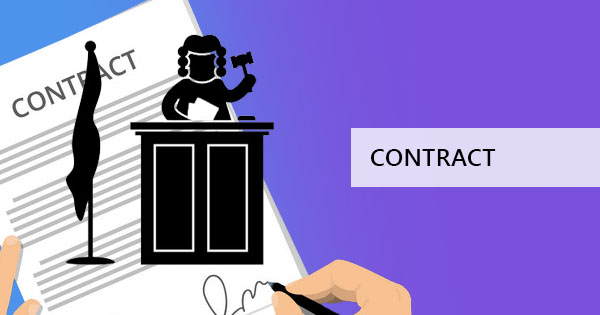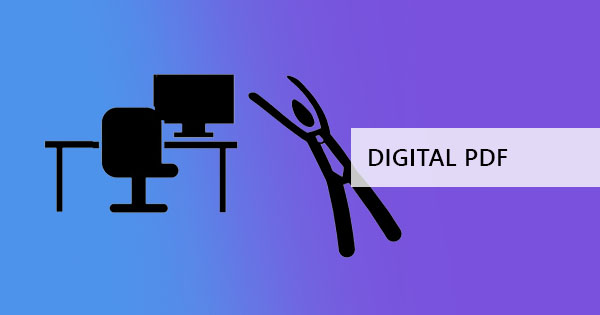
Contracts are basically documenting and enclosing information about the agreement between two parties, written for proof and for finality. As a rule, contracts are enforceable by law if there is something on it that was not followed. With this document as proof, it is very easy for someone to file a complaint if there is dispute.

Contracts can be in two different forms - verbal or written. A verbal agreement is somewhat risky to take since it is only depending on a verbal statement or something that the two parties had talked about. There are no intentions of writing it down, therefore there can be a chance for misinterpretations or other stipulations. The biggest downside of a verbal agreement is the fact that there is no evidence if there will be a dispute. A verbal agreement is hard to mediate since there is no contract that arbitrators can rely on.
Of course, the best contract is still a written contract as it allows both parties to indicate all the conditions and terms they wish, avoiding any misinterpretations that may cause disputes. Once it is final, all agreements cannot be changed anymore. This written document will also serve as the agreement’s bible and can be their basis if the information is forgotten.
Contracts are made for all agreements that involve the exchange of foods, services, money, business, materials, or even with simple promises. Contracts are used anywhere and can be found locally or internationally. Everyone in the world uses contracts to seal the deal and can be used for anything. There are no restrictions as long as both parties would agree on what they wrote.
Anyone with an agreement would want a sound contract but there will be no perfect contract if you don’t make it foolproof. Of course, we want to make our contract exclusive that no other people can use it to gain their personal interest. We want to make our contracts secure and safe but easy to make. In order to achieve this, contracts are advised to be converted into a non-editable format called PDF (Portable Document Format). This is one way that a contract becomes foolproof and secured.
Reasons why PDF format is a good fit for creating your contract:
1. PDFs are easy to use. It’s a universal format and can be read, viewed and opened everywhere. It is the default go-to format for most corporate businesses and common individuals. Even your Word processor can save files into PDF.
Read also: Advantages of PDF over PPT
2. Compatibility is a big issue for those who transfer files often and PDFs were made for this. Content in a PDF will never change and will look the same way it was made. Fonts, layouts, images, and formats will look exactly the way it was even after transfers.

3. The size and quality will never be compromised. PDFs can be compressed into small files without suffering its quality, meaning the contents will be retained like the original. With this feature, files become more appealing and effective.
4. Security is the number one concern for digital contracts and since PDFs can be encrypted, security will never be an issue for this format. Contract writers can put low or high levels of security. For instance, you can place a simple watermark on the contract for low-level security or you can add a password for high-level security. It can be modified based on your preference.
How to make a contract
Now, of course, making a foolproof contract doesn’t just start and end with the format. There’s still the content to discern and the steps to take to ensure that you write correctly and clearly what was agreed upon. So, here are a few tips that will guide you to create your very own.

1. Communicate your intentions and your goals with the opposite party. If you’re doing business with another person or perhaps exchanging services, the first thing to clarify is what your end goals are. Make it fair and make sure it’s something you can commit.
2. When writing the agreement, ensure that the words have no loopholes. Make a contract that is in an understandable form where words are precisely described. Being definite can help you both avoid any misunderstandings or disputes in the future. This includes the dates, the details of the product or the service, the monetary value (if any), the partnership, names of people or organizations involved, and the responsibilities.
3. Always consider the challenges. There may always be instances where the contract will be in question, especially if there’s a third party that may cause a burden. For instance, if you have a contract to buy a house but amid the transaction, a hurricane comes by and destroys it, what would it entail? Would the buyer still need to purchase it with the same amount or would it be less? You would also need to indicate what each party should and should not do.
4. Make sure to elaborate on the terms and conditions in the contract. Be specific and layout all the exact terms to avoid confusion, especially if this agreement affects a whole organization or future leaders. If there are damages or liabilities which the opposite party accepts, this too should be included in the terms.
5. Of course, all contracts can also end as agreed by both parties so it is also advisable to add a termination clause. This clause states all the legal ways of removing one party or both parties from such agreement without breach. This is most essential for long term contacts.
6. Never forget to sign and notarize. Make a contract legal by obtaining the signature of both parties which also means naming it after those involved. Having it notarized is also essential as it will make the contract a public instrument and can be used in court. It means nothing if the offer is accepted but has no written proof. If there should be changes, negotiation should be done and altered in the contract.
7. Lastly, make sure that all things agreed are legal and binding. Consider the age of the people involved, the nature of the industry and if the agreement was made in good faith. Any fraudulent transactions or threats can void the contract.
Format of a contract
There’s no definite format for contracts since its content can go long or short, depending on the agreement. The essential elements that need to be found on a contract though can be summed up in this sample which elaborates on the parts of a client-vendor contract.

1. Overview
This is a short description of the two parties who are in agreement, the sum of the project, duration of the project or date, and the monetary value or cost of the agreement.
2. Responsibilities
Provide information about the agreement that includes the job, duties, responsibilities, and promises of the vendor and the client. If there are payment terms involved, this will be considered a responsibility for the client.
3. Scope of work
This part elaborates on the deliverables of the vendor. If there is a budget involved, explain in detail what they get in return. Explain the inclusions, freebies (if any), limitations and any process that should be observed.
4. Challenges
Indicate how a situation be managed when things don’t go as planned. May it be changes, challenges, “acts of God” such as interventions from nature, or anything affecting the agreement to change. Place the additional fees or workload that should be included if there are any.
5. Rights of clients and vendors
If this was a product such as music, graphic design or photos, copyright ownerships can be elaborated in the contract. You can indicate the limitations of where it can or cannot be used, you can also explain if the work is completely turned over to the client or if a non-editable work is only given. If you don’t want this work to be used in billboards, you can also limit the ownership to digital use. As long as it was agreed, it can be placed on the contract.
6. Warranty
This is often optional for small online businesses or freelancers but for big companies, this is a must. Explain the duration of which your company is willing to fix/return or exchange the product or service. It is recommended though that the date be specific rather than placing a number of days in the contract to avoid loopholes. Of course, if the warranty is over, the question still is what happens next? What should the client pay for your company to fix things after the expiration of the warranty?
7. Fees and payment method
Will the payment be paid in full once the work is done? Is there a 50% down payment required before the project is started? Will there be a monthly fee or additional fee when plans change? How would the timeline look like? These are the common questions that you should ask yourself when drafting this section. If you can, it is best to assign an amount for every milestone reached, especially if the payment terms are in staggered payment terms.
8. Termination
Not all partnerships and client-vendor relationships work. If there is a need to cancel the contract, this section should indicate what are valid premises, the conditions and what should be done to cancel the whole agreement.
9. Acceptance by signature
Make sure to get it signed and sealed! Better if you can sign multiple copies and put witnesses signed too to make it stronger.



